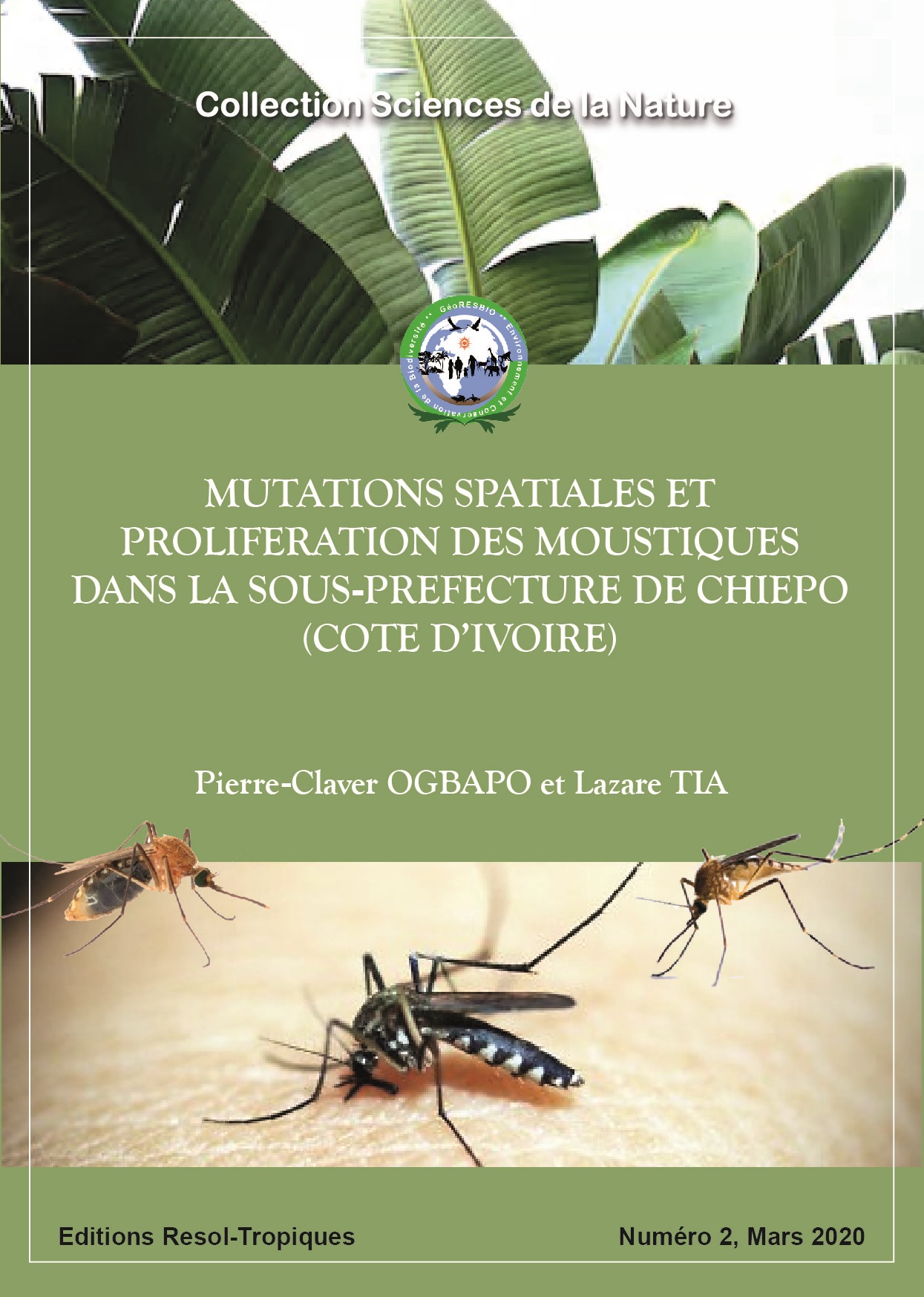Pierre-Claver Ogbapo, Lazare Tia
Collection Sciences de la Nature, Editions Resol-Tropiques, 2020 - 178 pages
This study aims to analyse the complaints of the Chiépo populations, of mosquito proliferation, following hydro-agricultural developments. To achieve this, the results of documentary research were supplemented by a household survey, direct observation of the physical and human environment and larval prospecting. The results show that natural ecosystems, behaviour, lifestyle and the low level of prophylactic knowledge of the populations, coupled with the type of socio-economic activities, contribute to the development of mosquitoes that have breeding and resting places and the availability of their blood meal at short distances. Breeding sites are mainly permanent (42.9%) and temporary (37.4%). They are home to three genera of mosquito larvae, predominantly Culex (47%) present in 80% of the localities in the study area. Localities with high larval densities are Chiépo (Anopheles and Aedes), CFI and Guiguidou (Culex). Ultimately, hydro-agricultural developments had an aggravating effect on mosquito density in Chiépo.
Published: 2020-03-31

